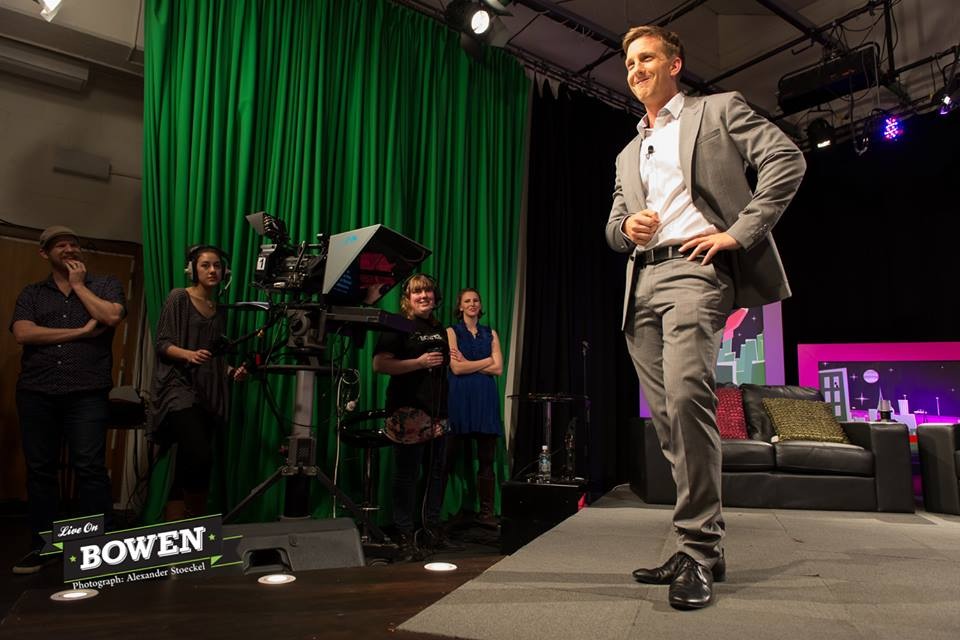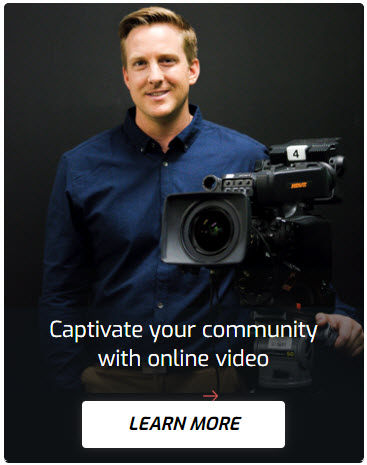To be a powerful influencer, you need to get the attention of your audience and inspire confidence.If people sense that you are motivated and sincere they are much more likely to listen to what you have to say.
If you’re using video to connect with your target audience, then body language is an extremely important part of your personal brand.We often take nonverbal communication for granted, but when you’re presenting your ideas and products on-camera, how you look and the way you move can influence your viewers just as much as the words coming out of your mouth.
Here are 5 useful body language hacks to power-up your video presentation skill set:
1. Chill Out
Human beings are very good at picking up signs of nervousness or stress, and most people find it uncomfortable to watch somebody else experiencing nervous tension. If you look nervous it will be distracting for your audience and weaken your message, so… relax.
Take ten minutes before you record a video to do some of these simple relaxation exercises:
- Stand still, in a relaxed posture and focus on your breathing. Breathe in through your nose, and then exhale through your mouth for a count of three. Repeat the focused breathing 5 or 6 times.
- Stretching and yoga are a great way to loosen up if you are stressed.Stand with your feet shoulder width apart and slowly drop your head forward, relaxing your neck and shoulders, until your chin is resting gently on your chest.
- Shrug your shoulders up to your ears, hold them there for 3 or 4 seconds, and then let them fall loosely.
- Raise both arms above your head and stretch your fingertips toward the ceiling. wiggle your fingers and keep your arms raised for a few seconds and then allow your arms to fall gently back to your sides.
2. Breathe
When I was a kid I had a lot to say and I spoke very quickly. I can clearly remember my elementary/primary school drama teacher, Mr Allen, telling me on more than one occasion;
“Don’t forget to breathe, Aaron. If you stop breathing, my boy, you will die!”
The way he said it always made me laugh - and that in itself would help me to relax - but he had a good point. Many times when we are stressed or nervous we start talking a mile-a-minute, and we forget to breathe.
Shortness of breath communicates tension and nervousness to our audience. People are acutely aware of each other’s breathing patterns; it’s one of our key indicators of fear and discomfort. Unnatural or erratic breathing from you can trigger sympathetic tension in other people.
Always take a few deep breaths right before you roll camera and record a video.
When you’re reading from a script or an autocue, use the punctuation to help you remember to breathe. When you see a period/full stop in the text; that’s a space to take a breath.
The secret to good breathing is to relax your diaphragm and allow your body to find its own rhythm.Practice breathing into your abdomen, and not your upper chest.If you are lifting your shoulders when you breathe, then you are creating unnecessary strain in your body. Drop your shoulders and feel your breath in your belly.
3. Use Natural Eye Contact
I’m sure you know that old saying: ‘the eyes are the windows to the soul’.
Steady, non-confrontational eye contact signals confidence and helps build trust between people. The way we make eye contact with our friends and family is one of the key indicators of warmth and intimacy.
When you’re presenting to a video camera, it’s a good practice to treat the camera like a friend.It can be really helpful to imagine someone you feel comfortable with standing behind the camera and then speaking to the camera as if you were speaking to that trusted friend.
Remember to let your eye contact be organic. If your camera presentation involves interaction with props, or you’re active in the scene, then allow your eye contact with the camera to come naturally from the situation.If you were walking down the street or cooking in the kitchen with your friend, you wouldn’t try to keep your eyes locked on theirs the whole time. The same logic applies to active camera presentations. Use your eye contact with the camera to maintain the connection with the viewer, but don’t be too fixated on eyeballing the lens non-stop, or you will appear awkward and unnatural.
4. Stand Comfortably and Confidently
The question I hear all the time from first-time camera presenters is:
“what should I do with my hands?”
The answer is, of course, ‘nothing’.
Well, nothing in particular, anyway. Like eye contact, posture and hand gestures need to fit the context.
If you take a minute to breathe and relax before stepping in front of a camera, you will find it much easier to keep your posture comfortable and composed.
The way you should stand and move in front of a camera has a lot to do with the framing. If the camera is very close to you, any small movement can be potentially distracting or unsettling for the viewer. But, if you are presenting in a wide shot, or very active in the scene, then you don’t need to be as conscious of your posture.
A common framing for camera presentation is the close-up: which is typically head and shoulders only. In a close-up, the main things to be aware of are the angle and movement of your head.
Adopting a confident stance with your feet shoulder width apart and one foot slightly in front of the other will help you find a comfortable balance point and keep your head from moving too much in a close-up.
Keep your hands relaxed, by your sides, and try to avoid excessive hand gestures, which may be distracting and create a sense of discomfort. But don’t feel like you have to stand completely still like a statue. Use your eye-line to create stillness in your posture. Imagine you are looking into the eyes of your trusted friend behind the camera and focus on that sense of connection. Keeping in a focused and calm state of mind will help you look grounded without seeming too rigid.
5. Smile!
This is the golden rule of camera presentation: if in doubt, smile it out!
Smiling is infectious. It works in conversation and it works on camera too. Smiling at your audience makes them feel good about themselves, and that, by connection, makes them feel good about you and your message.
A warm smile encourages an audience to feel relaxed and comfortable; it says ‘everything is OK, and we’re going to have fun here.’
A good smile is at the core of every camera personality’s brand. Having a good camera smile doesn’t mean grinning from ear to ear non-stop (that just makes people look crazy). A camera smile is an attitude as well as a facial expression. It starts with your breath, moves through your body and shines out of your face.
It’s useful to think about a smile as a physical elevation of your whole body. Fill your lungs with air, lift up your chin, relax your shoulders and let your confidence pull up your cheeks. If your teeth don’t appear, don’t worry. Powerful smiles are in the eyes, not the dental work. The video audience of the 2000’s is very sensitive to fakery; they respond more to authenticity than superficial glamor.
Don’t practice smiling in the mirror; it will just make you self-conscious. When we look in a mirror we are often too focused on our perceived physical flaws. A winning smile comes from a positive attitude, not physical perfection.
The great power of a smile is that it can make even the least glamorous of us look attractive.
To create a natural, sincere smile we need to have something to smile about. That can be tricky if you’re feeling nervous or stressed out.
If you’re having trouble conjuring a natural smile in front of the camera, try this:
Imagine your trusted friend again, standing behind the lens. Imagine your friend smiling reassuringly at you and let your face do its thing.
Takeaways:
- Being a great video presenter isn’t about looking a certain way or showing all your teeth, it’s about authenticity and creating a sense of connection with your viewers. Humans are very good at picking up the subtle indicators and moods that our body language sends out, and people are attracted to confidence and warmth.
- Your enthusiasm about your brand, product or service will come across best if you can create an authentic feeling of connection with your audience, so talk to the camera as if you’re talking to a trusted friend.
- Being relaxed and natural in front of a camera is something everyone can learn with practice and simple relaxation techniques like breathing, stretching and positive visualization to get in a relaxed frame of mind before you record.
- It’s important to engage with your audience as friends. Smile with your whole body. Sending positive energy to and having fun with your viewers will make them feel good about themselves, and they will connect that with you and your brand, product or service.
- Remember Mr Allen’s prudent advice; ‘don’t forget to breathe!’
Until next time, keep breathing!






